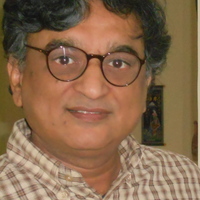Olav Elias Gundersen - Profile on Academia.edu (original) (raw)

Address: Tromsø, Troms Fylke, Norway
less
Related Authors
Uploads
Papers by Olav Elias Gundersen
Conferences and Workshops organised by Olav Elias Gundersen
Theoretical Archaeology Group (TAG) Conference, University College London, 16-18 December, 2019
Money is a commonplace of complex societies, and evidence for its production and use appears in t... more Money is a commonplace of complex societies, and evidence for its production and use appears in the archaeological record at multiple scales: from individual coins, dies, and weights, to mint buildings, metallurgical workshops, and mining complexes. The character, scope, and volume of this evidence means that archaeology can offer significant and unique contributions to wider anthropological and sociological debates concerning the socio-cultural processes by which money comes into being: how are objects transformed into money, how are different forms of money rendered legitimate or illegitimate, and how are the social conventions behind money maintained or challenged by its producers and (non)users? This session explores the social production of money and moneys in past societies, with a focus on five key themes:
- The assignation of value to monetary media
- Legitimation and validation of moneys
- Fungibility and commensuration of moneys
- Money and institutions
- Hierarchies of money
Theoretical Archaeology Group (TAG) Conference, University College London, 16-18 December, 2019
Money is a commonplace of complex societies, and evidence for its production and use appears in t... more Money is a commonplace of complex societies, and evidence for its production and use appears in the archaeological record at multiple scales: from individual coins, dies, and weights, to mint buildings, metallurgical workshops, and mining complexes. The character, scope, and volume of this evidence means that archaeology can offer significant and unique contributions to wider anthropological and sociological debates concerning the socio-cultural processes by which money comes into being: how are objects transformed into money, how are different forms of money rendered legitimate or illegitimate, and how are the social conventions behind money maintained or challenged by its producers and (non)users? This session explores the social production of money and moneys in past societies, with a focus on five key themes:
- The assignation of value to monetary media
- Legitimation and validation of moneys
- Fungibility and commensuration of moneys
- Money and institutions
- Hierarchies of money










